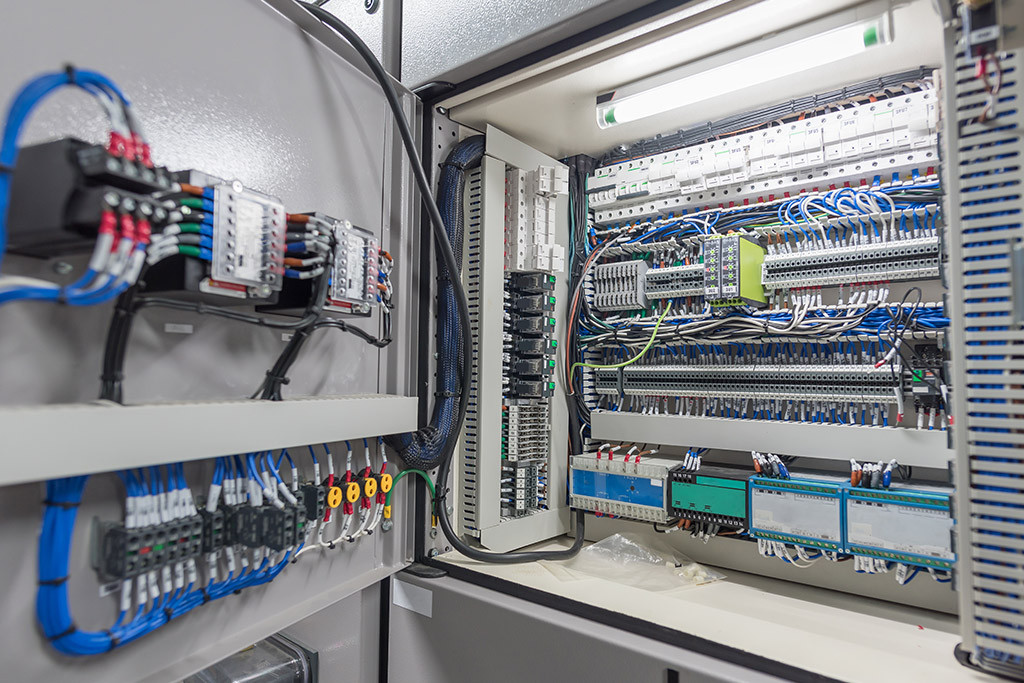
A building management system (BMS) is a software that helps manage and monitor the performance of buildings. It integrates data from a variety of sources, including HVAC, security, water, and energy systems. A BMS can automate tasks and improve the efficiency of building operations. In addition, it can help manage risk by tracking incidents and predicting problems. BMSs can be used in a variety of settings, such as hospitals, schools, office buildings, and retail stores. If you are looking to improve the efficiency of your building or streamline its operations, a BMS may be the answer for you.
A building management system (BMS) is a software application that helps manage the facility and its occupants. Building management systems can control everything from security to energy usage to HVAC. By installing and using a BMS, building owners can reduce costs associated with managing their facilities, improve efficiency, and ensure safety for their tenants.
A building management system (BMS) is a computerized system that manages the operations and maintenance of a building, including its occupants, environment, and resources. The BMS can include features to help managers optimize the use of energy, water, and other resources; monitor builbuilding performance; and manage emergency response procedures. The benefits of deploying a BMS in a building can be significant: reduced costs related to energy consumption, maintenance, and security; improved safety and efficiency; and increased collaboration between managers and occupants.
A building management systems (BMS) is a computerized system that regulates, manages and reports on the physical health and condition of an entire facility, from construction to occupancy. It covers everything from security and fire detection to energy conservation.
A BMS typically employs software modules to collect data about the building’s conditions, such as temperature, humidity and air quality. This data is then analyzed and used to make decisions about how to maintain or improve the environment.
A BMS can also provide alerts when conditions reach a certain level of severity. In this way, it can help maintenance crews respond quickly and effectively to problems.
A BMS can be divided into two categories: those that are integrated with existing infrastructure and those that are standalone systems. The integrated systems are usually more comprehensive and offer more features than the standalone models. However, they may require additional hardware or software components to be installed on site.
A building management systems (BMS) is a software program that manages the physical and operational aspects of buildings, such as lighting, temperature, ventilation, security, and more. A BMS can help to improve the efficiency of a building’s operations, save on costs, and make it easier to maintain. Additionally, BMS can help to ensure compliance with safety regulations. Some key benefits of having a BMS include:
– Improved efficiency: A BMS can help to streamline the operation of a building by automating certain tasks. This can lead to increased productivity and reduced costs.
– Reduced maintenance costs: A BMS can monitor and manage many aspects of a building’s operation automatically. This means that maintenance staff need less time spend on tasks that could be automated, which in turn reduces costs for the business.
– Increased security: A properly implemented BMS can help to increase security throughout a building by automating functions such as surveillance and alarm systems. This can protect residents and property from potential threats.
A BMS, or Building management systems, is a computer system that manages an organization’s building. A BMS can automate many routine tasks and help keep the building in good condition. Here are five advantages of using a BMS:
1. Efficiency: A BMS can automate many routine tasks, saving time and money.
2. Compliance: A BMS can help ensure compliance with regulations such as fire safety requirements and energy conservation standards.
3. Security: A BMS can help protect sensitive data by monitoring and recording all activity in the building.
4. Maintenance: A BMS can manage regular maintenance tasks, keeping the building in good condition.
5. Automation: A BMS can provide advanced automation features to make the management of the building easier
Building energy management systems (BEMS) are electronic systems used to optimize and monitor the use of energy in a building. They can help improve the efficiency of an organization’s operations by reducing energy waste and pollution, and improving cost effectiveness. BEMS can also help to protect people and property within a building from potential injury or damage.
A typical BEMS system includes sensors that monitor various aspects of a building’s energy usage, including temperature, ventilation, lighting, power consumption, water usage, and occupancy. The system then uses this data to recommend changes to how the building is operated in order to reduce waste and save money. BEMS can also provide proactive warning notifications if there is an issue with the building’s energy consumption that could lead to safety risks or environmental damage.
A building management system (BMS) is a computer system that manages the physical environment of buildings. It collects data from sensors and other sources, analyses it, and uses that information to make decisions about the operation and maintenance of the building. BMSs may also provide facilities management services, including scheduling cleaning, repairs, and inspections.
BMSes can automate many tasks in a building, such as lighting and air conditioning control, security monitoring, and water heating. They can also manage communication between various devices in the building, so that data flows smoothly between them. This allows administrators to focus on more strategic tasks instead of tediously micromanaging individual devices.
There are several different types of BMSes. Some are stand-alone systems that manage only one building at a time. Other systems are built into larger software platforms that manage multiple buildings across a company or entire city. There is even a type of BMS called an intelligent agent BMS (IA-BMS), which is capable of learning on its own and making decisions based on its own analysis of data.
The benefits of using a BMS are manifold: it can streamline operations by automating tasks; ensure consistency and accuracy by managing data coordination; improve safety by monitoring conditions; reduce energy costs by automating controls; and increase efficiency by reducing human error. From a business standpoint, there are also plenty of benefits to be had: reduced maintenance costs due to fewer errors; increased
A building management systems (BMS) is an application that helps manage a building by tracking its physical and occupants, managing resources, managing communication, and performing other tasks. A BMS can automate many of the tasks typically required to manage a building, such as security, maintenance, and energy conservation.
A BMS can be used in any type of facility, including hospitals, office buildings, schools, factories, or stores. It can also be used in homes or small businesses. A BMS can be customized to meet the specific needs of a particular organization.
A BMS consists of three main components: the database system, the user interface system, and the automation system. The database system stores information about the building’s layout and contents. The user interface system enables users to access this information and perform necessary tasks. The automation system performs tasks on behalf of users automatically.
A building management systems (BMS) is a computer-aided system designed to manage and monitor the operational aspects of buildings. BMSs can automate routine tasks and help managers optimize operations, making it easier for buildings to operate effectively. By automating tasks and monitoring performance, BMSs can help reduce costs and improve efficiency.

Support and maintenance services are available through us. We can provide ad-hoc support or tailored ongoing support tailored to your needs. In addition, we provide integrated remote support and BMS system monitoring, allowing us to detect issues as soon as they occur. Through thorough analysis of your building’s system, we can recommend optimal actions tailored to your building’s specific environmental conditions.
Copyright © by BMS Control Systems Limited 2023. All right reserved. Company No. 05899420
